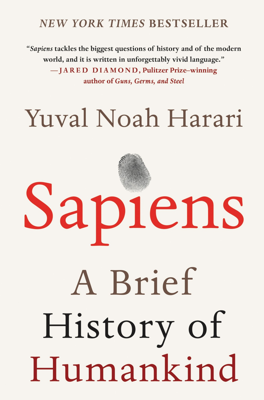The End of Homo Sapiens
The Transcendence of Homo Sapiens
As we step into the 21st century, Homo sapiens are beginning to transcend the limitations set by billions of years of natural selection. Through the achievements of the Scientific Revolution, humanity is no longer bound by the evolutionary traits dictated by nature but is moving towards the realms of intelligent design. This marks a profound shift from the era where no species, including ancient microorganisms or variations like giraffes and dolphins, could manipulate biological processes through conscious design.
From Selective Breeding to Genetic Engineering
Historically, Homo sapiens' attempt at directing evolution started with selective breeding during the Agricultural Revolution, about 10,000 years ago. People realized that by breeding specific traits, they could manipulate species like chickens to have desired characteristics. This process was still tied to naturally existing genetic traits.
However, with the advancement of scientific knowledge, particularly in genetics, we are able to introduce completely new traits from unrelated organisms, transcending traditional selection methods. For instance, scientists created a fluorescent green rabbit, named Alba, engineered by inserting genes from a jellyfish into its DNA—a stark departure from traits that would ever arise in nature.
Biological Engineering and its Implications
As scientists dive deeper into genetic manipulation, ethical, political, and ideological concerns surge. Genetic engineering has extended from microorganisms to plants and is even reaching more complex animals. Humans have been able to manipulate organisms to produce beneficial substances like insulin and increase resistance in crops through genes from other species.
Resurrecting and Redesigning Life
Going beyond the enhancement of existing species, scientists are working towards reviving extinct species like mammoths, utilizing DNA to potentially create life forms that have not existed for thousands of years. There's even speculation about recreating Neanderthals using reconstructed DNA, opening a debate about the purposes and consequences of resurrecting extinct hominid species.
The Evolution of Cyborgs and Artificial Life
Parallel to biological engineering, technology is increasingly leading to the integration of organic and inorganic materials, creating cyborgs—organisms that blend mechanical elements with biological ones. This development extends human capabilities significantly but also starts to blur the lines of what constitutes a living being. Projects like DARPA’s insect cyborgs for espionage or the development of bionic limbs controlled by thought alone showcase this integration.
Moreover, pure artificial intelligence and digital life forms, such as computer viruses, exhibit evolutionary capacities akin to biological organisms, challenging our understanding of life. This suggests the potential rise of consciousness in machines or the integration of human consciousness with digital frameworks, initiating a novel form of evolutionary process independent of organic evolution.
Implications for the Future
These advancements herald a new age where the definition of life, consciousness, and identity might be fundamentally altered. The questions posed by these capabilities are profound—encompassing not just the technical aspects of biological and technological enhancements but also demanding deep ethical, philosophical, and societal introspection. As we move closer to potentially creating beings surpassing human capabilities in every measurable way, we confront not just technological challenges but the core of what it means to be human and the ethical boundaries of our innovative endeavors. This exploration could redefine existence and usher in a new era of what it means to be alive, challenging the very essence of human identity and morality.
